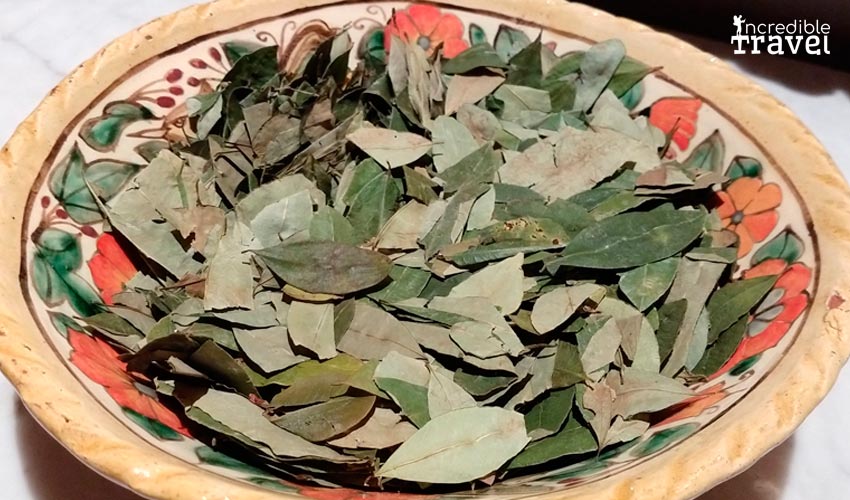With corn and potatoes, coca forms the trilogy of plants that had a sacred character in pre-Hispanic times and that continue to play a very important role in the food and culture of the Peruvian people to this day.
Coca (Erythroxylon coca, E. novogranatense) is a shrub that reaches 2.5 meters in height with a woody stem and small, deep green ellipsoidal leaves. Its flowers are tiny and white. Its red fruits are ovoid in shape and measure about one centimeter.
Coca grows adequately in the hot and humid lands of the eastern slope of the Andes, in an altitude range that goes from 1,200 to 2,000 meters above sea level. however, crops at altitudes outside this range are possible in certain regions. It even grows under the shade of large trees in tropical regions.
Coca contains several substances known as alkaloids. Cocaine is just one of them. These alkaloids have stimulating, anesthetic, therapeutic and appetite, thirst and fatigue-reducing properties and are extracted from the leaf by chewing or cooking.
Coca is harvested up to three times a year and manually. The leaves are plucked by the petiole and dried in the sun for later sale and marketing. The same plant can be harvested for up to ten years. Coca has not been found in the wild and archaeological testimonies prove that its use was widely spread since long before the Incas, so that its domestication and form of use was the result of secular work.
The consumption of coca is widely spread among the indigenous population of the Andes. Chacchar is the act of chewing dry leaves to extract active and stimulating substances from them. To achieve the desired effects, it is necessary to add an alkaline component to the mixture, usually quicklime or ash. This is obtained with the llipta (tobacco, corn or quinoa ash that mixed with chicha, is stored in the form of rolls or blocks) or simply with the help of a pin previously moistened with saliva.
The coca leaf also has medicinal virtues, either alone or in combination with other substances. Against headaches, the leaves are applied, somewhat chewed or whole, on the temples. To alleviate belly pain, they are chewed with llipta. In infusion, they counteract altitude sickness, control diarrhea and even vomiting caused by tuberculosis; and in friction they are used to cure chilblains.
Its use transcends the mere fact of mitigating the sensations of hunger, thirst or fatigue, since the chacchado, in reality, is a ritual act with profound social implications for the Andean man. According to Enrique Lopéz Albujar, the chacchado “stimulates, abstracts, rejoices, saddens, intoxicates, deludes, hallucinates, impassive”. Coca provides the peasant with resistance to fatigue and hunger, or subtlety to penetrate the complexities of the human soul. The pacco (Andean shaman) officiates with her during his magical ceremonies; and lost in thought, the Andean man savors it to penetrate the arcana of his destiny. It also serves as a magic plant. Its leaves are blown in the wind to obtain divinatory results, as well as to offer them as an offering to the gods and holy places.
After the conquest, the opinions of the Spanish about the effects of coca were divided, as some attributed them to the influence of ancient superstitions, others thought that they were purely imaginary and there were those who saw it produce “strength and breath in the Indians”, because” with a handful of coca (they could) walk twice as long, sometimes without eating anything else “(José de Acosta). In time, there was a man of science, one of the first to describe its beneficial effects was Hipólito Unanue, who came to recommend “the divine plant”, suggesting its domestic use instead of tea, making its beneficial action on the energies of the sailor more expensive. and soldiers and even highlighting its analgesic, cleansing and stimulating virtues.
Today, traditional coca use is threatened by increased cocaine production, creating strong international pressure for the eradication of all crops. It should be noted, however, that traditional employment has nothing to do with addiction to cocaine, since it causes great damage to the body and emotional instability, while the former is practically innocuous and rather, an act of great symbolic content.

